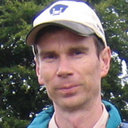Engineering plants for the phytoremediation of RDX in the presence of the co-contaminating explosive TNT.
Ключевые слова
абстрактный
The explosive compounds hexahydro-1,3,5-trinitro-1,3,5-triazine (RDX) and 2,4,6-trinitrotoluene (TNT) are widespread environmental contaminants commonly found as co-pollutants on military training ranges. TNT is a toxic carcinogen which remains tightly bound to the soil, whereas RDX is highly mobile leaching into groundwater and threatening drinking water supplies. We have engineered Arabidopsis plants that are able to degrade RDX, whilst withstanding the phytotoxicity of TNT. Arabidopsis thaliana (Arabidopsis) was transformed with the bacterial RDX-degrading xplA, and associated reductase xplB, from Rhodococcus rhodochrous strain 11Y, in combination with the TNT-detoxifying nitroreductase (NR), nfsI, from Enterobacter cloacae. Plants expressing XplA, XplB and NR remove RDX from soil leachate and grow on soil contaminated with RDX and TNT at concentrations inhibitory to XplA-only expressing plants. This is the first study to demonstrate the use of transgenic plants to tackle two chemically diverse organic compounds at levels comparable with those found on contaminated training ranges, indicating that this technology is capable of remediating concentrations of RDX found in situ. In addition, plants expressing XplA and XplB have substantially less RDX available in aerial tissues for herbivory and potential bioaccumulation.


